Schneider-Kreuznach PC-Super-Angulon 28mm F/2.8
Shift lens • Film era • Discontinued
Abbreviations
| PC | Perspective Control. |
Features highlight


Specification
| Production details: | |
| Announced: | <No data> |
| Production status: | ● Discontinued |
| Original name: | Schneider-KREUZNACH PC-SUPER-ANGULON 2.8/28 MULTICOATING |
| System: | - |
| Optical design: | |
| Focal length: | 28mm |
| Speed: | F/2.8 |
| Maximum format: | 35mm full frame |
| Mount and Flange focal distance: | Interchangeable mount |
| Diagonal angle of view: | 75.4° (35mm full frame) |
| Lens construction: | 12 elements in 10 groups |
| Floating element system | |
| Diaphragm mechanism: | |
| Diaphragm type: | Preset |
| Aperture control: | Preset ring + Aperture lever |
| Number of blades: | 6 (six) |
| Focusing: | |
| Closest focusing distance: | 0.28m |
| Magnification ratio: | 1:6 at the closest focusing distance |
| Focusing modes: | Manual focus only |
| Manual focus control: | Focusing ring |
| Perspective control mechanism: | |
| Shift range: | -11..0..+11mm |
| Tilt range: | Not available |
| Lens rotation: | Yes |
| Tilt/Shift rotation: | - |
| Physical characteristics: | |
| Weight: | 565g |
| Maximum diameter x Length: | ⌀75×89mm |
| Accessories: | |
| Filters: | Screw-type 67mm |
| Lens hood: | 60013 - Screw-type round |
| Teleconverters: | <No data> |
| Source of data: | |
| Manufacturer's technical data. | |
Manufacturer description
The SCHNEIDER PC-SUPER-ANGULON 28mm f/2.8 is a very high-quality wide-angle lens for 35 mm analog and digital SLR cameras and provides a parallel shift facility like the sliding lens panel of professional large-format cameras for correcting converging vertical lines and for manipulating the perspective especially for use in architectural and product photography.
Whereas normal 35 mm lenses have an image circle diameter of around 44 mm so that all four corners of the image are inside the image circle, the PC-SUPER-ANGULON 28mm f/2.8 provides an incredible 62 mm image circle. Decentration up to 11 mm is possible within this area using a dove-tail guide which can be adjusted easily and exactly The rotatable mount allows any desired shift direction.
Vertical shift is the most popular: upward, especially when photographing high buildings, so that the camera does not have to be tilted upward; and downward for product shots at an oblique angle or also for shots from high locations such as towers or mountains so that the camera does not have to be tilted downward. When the camera is tilted either upward or downward, perpendicular lines are not imaged as perpendicular, but rather converge upward or downward, which is very pronounced in wide-angle shots and can be very irritating.
These converging lines can be prevented with the PC-SUPER-ANGULON 28mm f/2.8 just as with adjustable large-format cameras. If the adjustment range of 11 mm (the clearance of the camera bayonet fixes this limit) is not sufficient in extreme cases due to the oblique view being too steep, the parallel shift of the lens largely prevents the sloped position of the con-verging lines and furthermore also reduces the vertical compression of the imaged object which would otherwise occur. The image then again corresponds to the natural visual impression.
The adjustment takes place at a shifting knob on a flexible shaft which is easy to grip and sensitive in operation Millimeter scales on mutually opposite sides allow comfortable reading in any shifting knob position. Since the shift is possible at both sides of the zero position, the most favorable orientation can always be chosen, e.g. irrespective of the shift direction with the knob at the bottom with free hands, or rather at the top at the tripod.
With a shift to the left or to the right, the shifting knob can always be at the left so that the right hand can hold the camera and remain on the release button.
With a diagonal shift, the adjustment path should not go beyond the lock noticeable at 9.5 mm to prevent vignetting.
The rotary mount, however, also allows horizontal movements or a shift in a slanted direction, e.g. to be able to take a frontal photograph without any distortion from a lateral location or a location with a slanted offset if this would otherwise be impossible due to an obstacle or potential refections.
The PC-SUPER-ANGULON 28mm f/2.8 already produces an exceptionally flattened image at full aperture within the 62 mm image circle which is thus twice as large in area relative to the image circles of other 35 mm lenses. Sharpness and contrast are increased further in the central area used without shift by stepping down slightly to f/4 to f/5 6. Sharpness, contrast and brightness naturally drop outside this area due to the huge image angle with an open aperture. The full aperture with a decentered lens is therefore only intended for the image composition and the focusing. A good imaging performance is obtained at the edge when stepping down further in dependence on the adjustment path; an aperture of 11 is recommended at maximum shift. Distortion and vignetting are exceptionally low.
The maximum path of 11 mm at both sides can be utilized to the full in the shift direction of the short image edge (vertical in landscape format and horizontal in portrait format) if the lens is stopped down to at least f/8. On a shift in the direction of the long image edge (horizontally in landscape and perpendicular in portrait), low vignetting of the image corners opposite to the shift (= of objects on the same side of the shift because of the upside-down image) may occur over the last half millimeter. It is therefore recommended only to utilize the shift path up to 10.5 mm here and to stop down to f/11 with more than 9 mm to avoid this vignetting in critical motifs.
The noticeable latch step at 9.5 mm should not be exceeded diagonally even at f/11 with parallel shifts since then the image corner decentered the most will contact the image circle edge.
While the image quality falls considerably in the close range with many wide-angle lenses, the good imaging properties of this lens are maintained thanks to “floating elements” (a distance-coupled axial shift of a lens element group relative to the remaining system). This makes this lens very interesting e.g. for model shots.
The camera mount of the lens is fastened using Phillips screws and can be replaced to match the new camera on a change of the camera system. The user can make the refitting him or herself using a size zero Phillips screw-driver. The PC-SUPER-ANGULON 28mm f/2.8 with fixed Leica R bayonet mount was only available from Leica.
Only the oversized B+W WA filters of the size 67 EW can be used with the SCHNEIDER PC-SUPER-ANGULON 28mm f/2.8 due to the extremely large image angle utilized at maximum shift up to 93.4°. Furthermore, a special lens hood with a filter mount is also available which does not produce vignetting at maximum shift. The filter plates of 74mm diameter which can be inserted there are held in this specal lens hood by an adapter ring belonging to the lens hood.
From the editor
The following interchangeable mounts were available for this lens: Canon EF, Canon FD, Contax/Yashica, M42, Minolta/Sony A, Minolta SR, Nikon F (AI), Olympus OM, Pentax K, Rollei QBM.
Lenses with similar focal length
Sorted by manufacturer name
| ■Nikon F mount (4) | |||||||||
| Nikon PC-E Nikkor 24mm F/3.5D ED | A | 13 - 10 | 0.21m | ⌀77 | 2008 ● | ||||
| Nikon PC-Nikkor 28mm F/3.5 | P | 9 - 8 | 0.30m | ⌀72 | 1980 ● | ||||
| Nikon PC-Nikkor 28mm F/4 | P | 10 - 8 | 0.30m | ⌀72 | 1975 ● | ||||
| Samyang T-S 24mm F/3.5 ED AS UMC aka Bower T-S 24mm F/3.5 ED AS UMC aka Rokinon T-S 24mm F/3.5 ED AS UMC aka Walimex Pro T-S 24mm F/3.5 ED AS UMC | M | 16 - 11 | 0.20m | ⌀82 | 2013 ● | ||||
| ■Olympus OM mount (1) | |||||||||
| Olympus OM Zuiko Shift 24mm F/3.5 | M | 12 - 10 | 0.35m | -- | 1983 ● | ||||
| ■Pentax K mount (2) | |||||||||
| smc Pentax Shift 28mm F/3.5 | P | 12 - 11 | 0.30m | -- | 1975 ● | ||||
| Samyang T-S 24mm F/3.5 ED AS UMC aka Bower T-S 24mm F/3.5 ED AS UMC aka Rokinon T-S 24mm F/3.5 ED AS UMC aka Walimex Pro T-S 24mm F/3.5 ED AS UMC | M | 16 - 11 | 0.20m | ⌀82 | 2013 ● | ||||
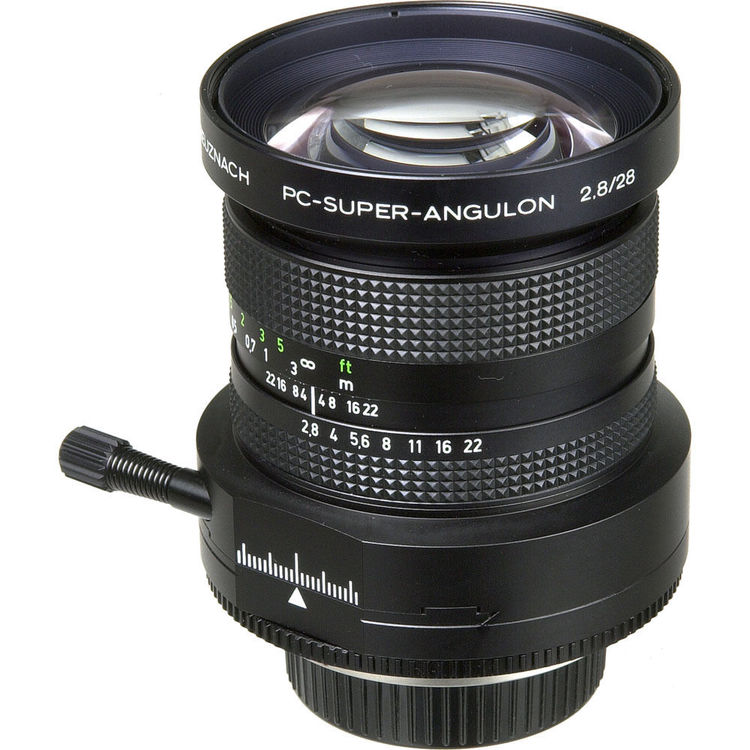
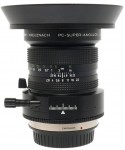
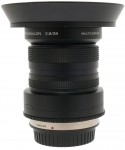
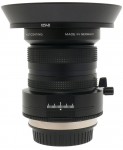
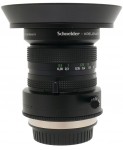
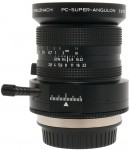
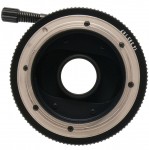

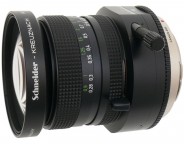
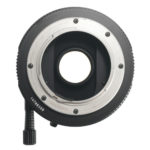
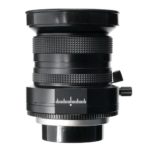
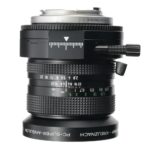
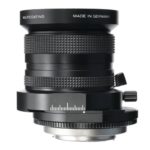
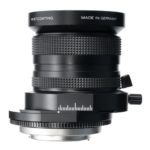
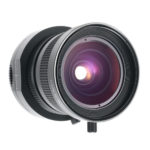
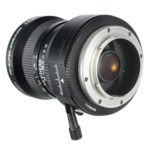
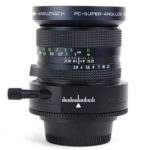
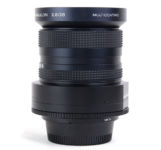
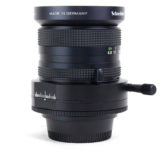

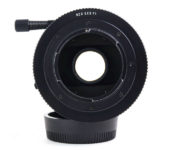
Thanks for a helpful review, when you say a ‘fixed Leica R bayonet mount’ how do you mean fixed, is in that this model can not be refitted like the Schneider-Kreuznach?
Schneider-Kreuznach branded PC-Super-Angulon 28mm F/2.8 lens for the Leica R mount never existed. Leica branded PC-Super-Angulon-R 28mm F/2.8 lens (which was added to our database separately) is optically and mechanically the same as this Schneider-Kreuznach lens, except for the lens mount which is not interchangeable.
Hello.
I have a Schneider Kreuznach PC-Super-Angulon 28mm f / 2.8 with Nikon F mount.
Is it possible to replace the Nikon mount on the lens with a Fuji X-mount? Exists?
Or should I use a Nikon F> Fuji X-mount adapter? Which one do you recommend in case.
Thanks
Schneider-Kreuznach never made dedicated Fujifilm X interchangeable mount for this lens because the lens is designed for 35mm full-frame SLR cameras and Fujifilm mirrorless cameras are APS-C. So, you should use a Nikon F – Fujifilm X mount adapter. I think that Kipon adapters can be safely and easily recommended. Kipon even offers Nikon F (AI) – Fujifilm X focal reducer (speedbooster), so you can get practically the same angle of view with this lens on a Fujifilm APS-C mirrorless camera as on a Nikon 35mm full-frame SLR camera.
Thanks a lot for the answer.
The 28mm full frame ported to APS-C becomes a 42mm. Still usable as a shift if you have space. To have nice sober images with less wide angle effect.
However it might be interesting to be able to use it with a speedbooster (I knew the Metabones, but i read that you suggest Kipon). So i could have a 28mm even on APS-C.
I talked about these speedboosters on a forum and many told me that the “focal reducers” would, however, worsen the beautiful quality of this lens (instead on his site Metabones says the opposite, in addition to increasing the brightness he says that it increases the quality of the MTF). Who is right?
I think that there is no reason not to trust Metabones. The function of the focal reducer is that it fits the image circle formed by a full-frame lens into the width of the APS-C sensor, which leads to increase in image sharpness and effective lens speed.
If we talk about the deterioration of the “beautiful quality of this lens”, then in what sense? Given the fact that the main application of this lens is to shoot wide-angle scenes (with perspective correction when needed). When combined with focal reducer, this functionality of the lens won’t change at all.
In terms of optical aberrations? When using a focal reducer, they will be more or less the same as on a full-frame camera. I mean lateral chromatic aberrations and distortion in the first place. And they can be easily corrected in post-production. Also, when shooting landscapes or architecture, you usually stop down to f/8 or more, so vignetting and some of the aberrations (longitudinal CAs, spherical aberration, astigmatism, field curvature) at these setting are gone anyway.
In terms of bokeh and recognizable character of the lens? But this wide-angle lens, while being pretty fast, was not designed to provide impressive bokeh and/or recognizable character. This is not a portrait or a fast standard prime lens, after all.
So, I don’t quite understand, as to be honest, what do those people mean by saying that focal reducers would worsen the beautiful quality of this lens.